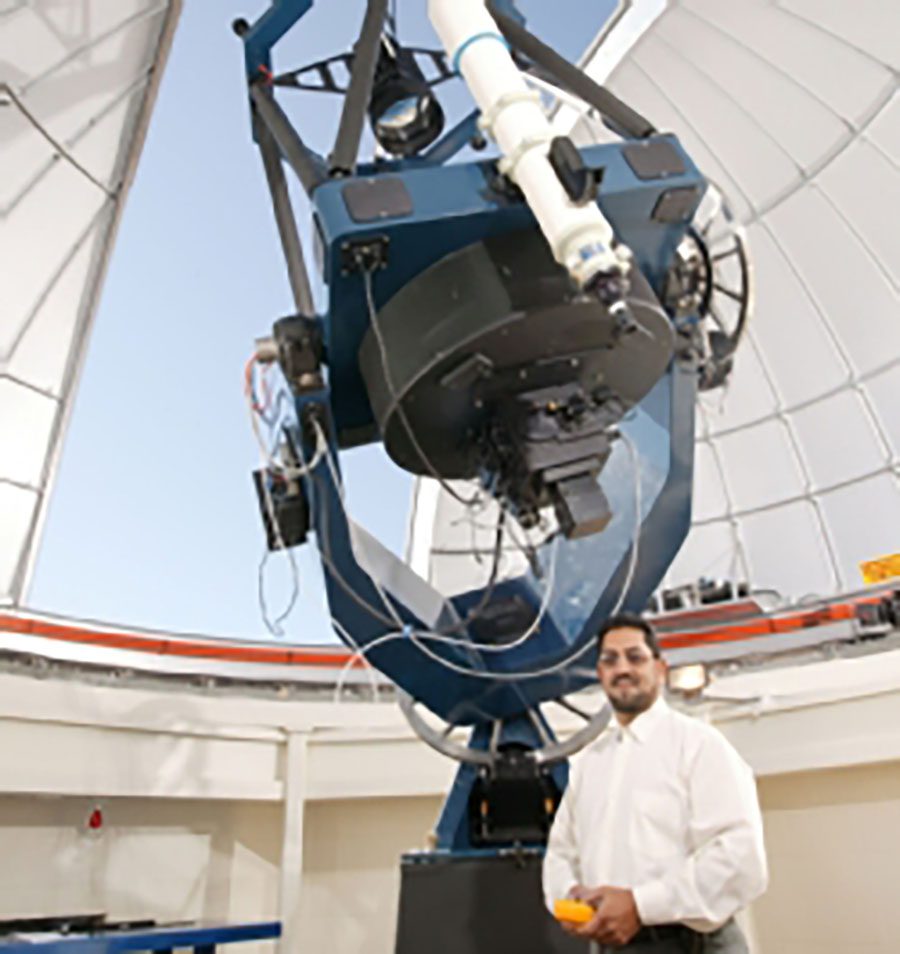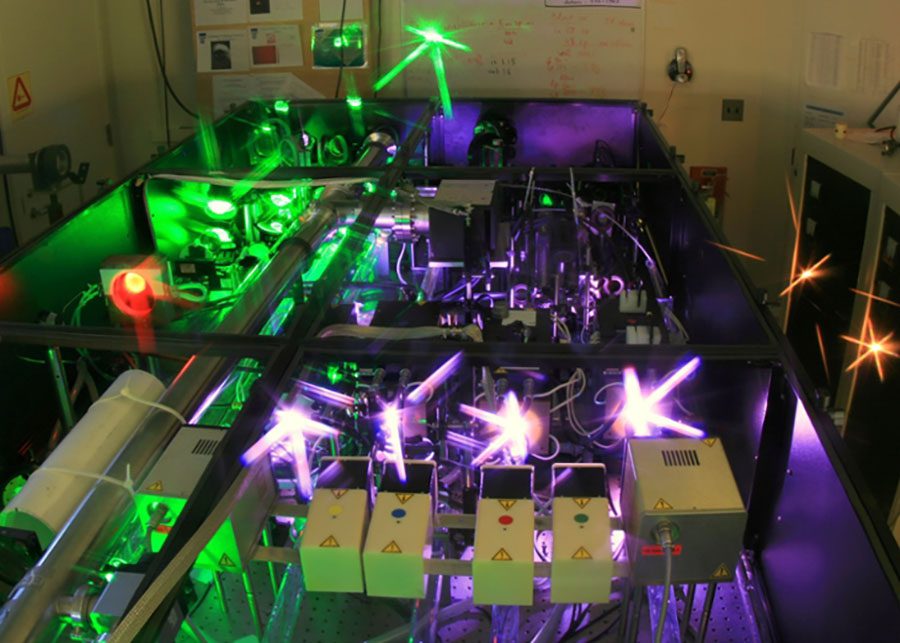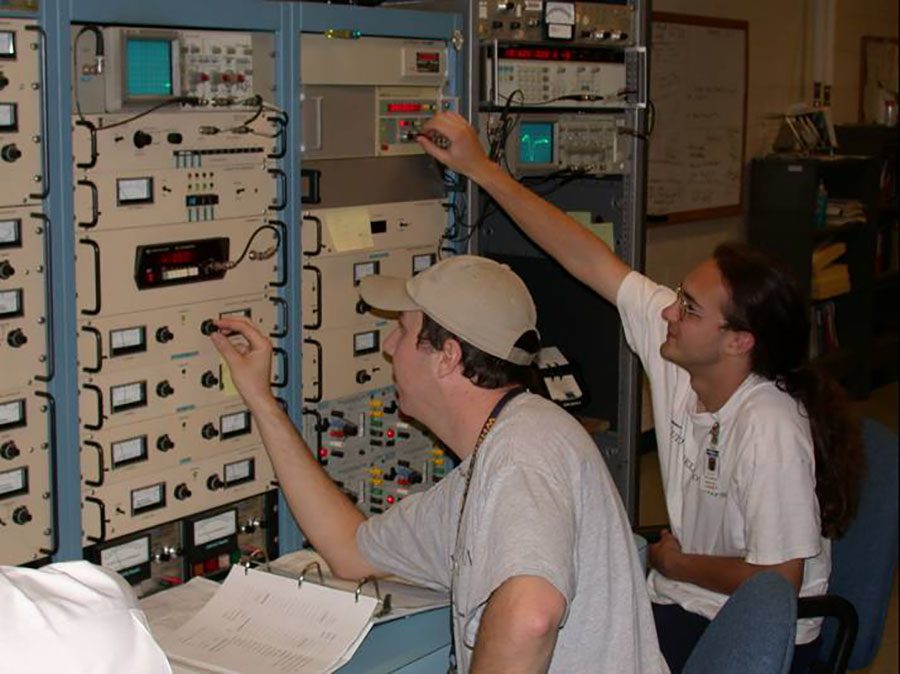Astronomy & Astrophysics

Astronomy is the branch of Physics that deal with the observation of planets, comets, asteroids, stars, and other astronomical bodies. As we observe the distant galaxies, we are looking at light we are seeing the universe as its was millions of years ago when the light began its journey to our telescope. Thus, our telescope is in effect a time machine. Astrophysics is the branch of physics where the laws of physics are used to try and explain astronomical phenomena including black holes, formation of galaxies, the life-cycle of stars, etc. Astrophysics is strongly connected to high energy particle (nuclear) physics. Our observations tell us that the universe was at extremely high energies (temperatures) just after the big bang. At these energies the force interactions were different than at the cooler temperatures of today. Particle physicists use large accelerators like the LHC to move to these high temperatures to test the laws of physics under this different energy regimes. Astrophysics has been successful in explaining many things including how the elements of the universe are formed, how galaxies are formed, how stars give off energy, etc.
Students in the Astronomy/Astrophysics portion of the camp will be given an introduction into optical and radio telescopes, astronomical objects (galaxies, stars, planets, etc) as well as techniques for performing and analyzing astronomical data. Students will construct a reflection telescope including determining the focal length of the primary mirror. Students will learn to remotely operate the Tarleton 32″ robotic telescope (largest of any U.S. undergraduate institution) to collect light curves from astronomical objects and will use computer artificial intelligence techniques to analyze the light curves from binary stars.
For additional information about this area contact either Dr. Shaukat Goderya and Dr. Michael Hibbs.
Optics & Lasers

Optics is one of the oldest and most exciting areas in physics. Following Charles Town invention of the Maser and subsequent development of the laser, physicists have used these instruments both to develop working devices for telecommunications, medicine, and other applications as well as to study the fundamental nature of the atom and the laws of physics. Today, physicists are studying the possibility of teleportation, quantum entanglement, quantum computing, and quantum cryptography among many other areas using lasers. They are also using lasers to detect anthrax as well as internal confinement to try and produce fusion for clean energy. The application of lasers for less invasive and more precise surgery as well as biological testing is changing medicine. Students in this area will be given an introduction to the physics of optics including the principles of reflection, refraction, diffraction, polarization, and interference. The students will do a wide range of laboratory exercises including measuring the wavelength of a laser using an interferometer, proving Snell’s Law and the Law of Malus, finding the Brewster angle, and making a hologram.
For more information about this camp, contact Dr. Daniel Marble in the Tarleton Physics Program at 254-968-9880.
Electronics
The great power of electricity is our ability to control the electricity force in a manner not possible with other forces. Today, physicists and engineers can adjust the conductivity (ability of a material to conduct electricity) by 40 orders of magnitude (that is 1 followed by forty zeros!). The development of the transistor by physicists William Shockley, John Bardeen, and electrical engineer William Bratten at Bell Laboratory just after World War II was one of the most important developments of the twentieth century. Today, it is estimated that there are 40,000,000 transistors for every human. These devices provide us with the wealth of inexpensive electronic devices from radios and televisions to computers. Students in this area will be taught the physics behind AC/DC circuits and construct several circuits. Students will construct a power supply using a center-tap transformer and full wave rectifier. Students will also learn the basics behind select solid state devices and integrated circuits including diodes, transistors, 555 timers and operational amplifiers and perform laboratory exercises with these devices.
For more information about this camp, contact Dr. Daniel Marble in the Tarleton Physics Program at 254-968-9880.
Nuclear Physics

Tarleton is located 30 miles Southwest of Comanche Peak Nuclear Plant the site of two of Texas’ four nuclear reactors and is one of only five undergraduate universities in the U.S. with a tandem particle accelerator lab. Tarleton also has one of only two undergraduate physics programs with a specialized medical physics track.
Nuclear power is expected to be a major player in meeting the future energy needs of Texas with as many as eight more reactors being proposed for construction over the next 15 years. Thus, Texas needs skilled workers in the nuclear power area and jobs are expected to grow in order to staff new facilities and to deal with an aging workforce at existing facilities.
However, most people don’t know that nuclear physics concepts are far more prevalent in their lives than just nuclear power and that whether you get your energy from a nuclear power plant or from gasoline all energy originates in someway from a nuclear process. Furthermore, all atoms beyond hydrogen are also produced by nuclear processes inside large fusion reactors that we call Stars. Nuclear physics is what provides the power for everything in the universe from your car to planets to human beings. Energy from nuclear reactions is stored in plants where it is eventually turned into oil, gas, and coal. Nuclear energy from the sun is stored in the energy of oceans where it enables fish life and provides the power for hurricanes. Nuclear radioactivity inside our earth adds to nuclear energy from the sun that heats our planet and makes life possible. The techniques of nuclear physics are also extremely useful in medicine where nuclear techniques are used in medical imaging, treatment of cancer and in engineering where they enable use to create smaller devices and to detect impurities. We use large nuclear accelerators as time machines to travel back to when the Cosmos first began and to study the smallest features of the atom. You are probably using a former nuclear lab device, Cathode Ray Tube (CRT), to read this web page.
Students in this area will be instructed in Faraday’s Law of Magnetic Induction for electricity generation, perform experiments with step-up and step-down transformers, learn about the principles of operation of nuclear reactors and of vacuum technology, setup a nuclear detection system and measure the radiation from terrestrial and food sources including soil, bananas, Brazilian nuts, etc. Students will also engage in a project using Tarleton’s tandem accelerator to analyze a material using a nuclear technique such as Rutherford Backscattering.
For more information about this camp, contact Dr. Daniel Marble in the Tarleton Physics Program at 254-968-9880.
- Texas Work Force Commission Report on Texas Nuclear Work Force Development
- Nuclear Links
Medical Physics
Physics plays an important part in understanding human physiology including the nervous system, hearing, vision, and circulatory system. Physicists have developed many medical techniques including Magnetic Resonance Imaging, Positron Electron Tomography, CT, and proton therapy. Medical Physics is a branch of physics which applies physics for therapeutic applications and diagnostic imaging. With the rapid expansion of nuclear medicine, accelerator based radiation therapy and other physics based techniques, Medical Physics is one of the most rapidly growing and better paying medical areas. Tarleton’s Physics program has one of only two undergraduate physics programs in Texas with a Medical Physics track to prepare students for graduate study in Medical Physics. Students in this area will take advantage of Tarleton’s medical physics laboratory equipment to perform labs on the physics of the human eye and sight, ultrasound, and x-ray imaging. Students will also perform labs on the elution of a short lived radioisotope, the strength of materials as well as obtain classroom instruction in the circulatory system and the physics behind blood flow.
For more information about this camp, contact Dr. Daniel Marble in the Tarleton Physics Program at 254-968-9880.
Tarleton Physics Flyer